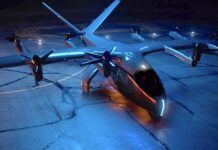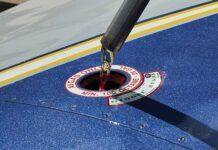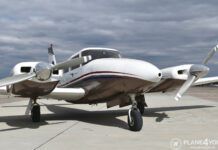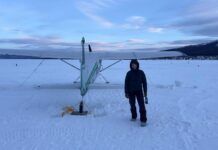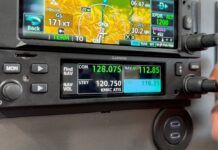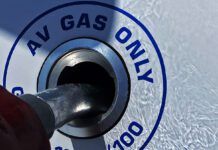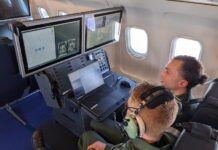Excuse me, but I think I’m having a moment here. I never really embraced the idea that people, as they age, revert to their teenage selves. But I think it’s happening to me.
When I was callow lad of 17, I built myself a hotrod—small-block Chevy, Duntov cam, glasspacks and a succession of gas-guzzling carburation culminating in a thrice of two-barrel Holleys. Sort of like this.It and I survived a couple of seasons of street racing at a time when we did that sort of thing.
Inexplicably, my next car was a 1963 Volkswagen and I must have owned a half dozen of them. Somehow, that elemental connection to the raw grunt of a V-8 mysteriously atrophied. Or so it seemed. But I noticed the virus reemerging when I flew CubCrafter’s Carbon Cub a couple of months ago.
As you know, the CarbonCub is a light Cub-type airframe stuffed with a 180-HP Titan engine. When it first appeared five years ago, it was called the Super SportCub and, for marketing reasons, later rechristened the Carbon Cub.
When I flew it then, it was mildly amusing, but I remember a low-volume whisper campaign from others in the LSA community suggesting that cramming that much horsepower into an LSA defiled the “spirit” of light sport. Right. Like anemic climbs, long takeoff runs and sluggish cruise is somehow a good thing to aspire to, as if there’s some kind of Zen in crawling along at freeway speeds. I’ve probably written this sort of fluff, but only because I can’t afford something that flies at 300 knots.
Anyway, when I flew the Carbon Cub in June, I got it in a way I didn’t get it five years ago. The thing just hops off a runway or the water and claws for altitude like a bottle rocket. While that’s going on, you can, for one bright shining moment, forget about the price of gas, neighbors offended by noise, carbon pollution and the incessant bray of safety nannies and appreciate, with a big grin, the fact that someone built such a thing because they could and that there are enough people who can afford to buy it. It’s just raw performance for the sake of it, uncompromised by excuses or explanations.
It’s not a new thing, either. In an era when it was more vigorous, the U.S. aircraft industry used to build its share of hotrods and sometimes did so with a giggle, if barely a nod to practicality. One was the Comanche 400, a 400-HP variant of the popular single that sported an eight-cylinder IO-720 developed just for the purpose. By modern standards, it wasn’t that fast, but brother, could it climb. It wasn’t a huge sales success, either. Only 146 were made. Some are still out there.
But both Piper and Cessna produced single-engine hotrods that were both practical and successful. One was Piper’s PA-28-235/236 which, in its final iteration, was the Dakota. With a 235-hp O-540 in what was essentially a Cherokee airframe, these airplanes were good performers, especially in payload, and remain popular on the used market. Cessna’s entry was the airplane people always forget: The Hawk XP, which had a six-cylinder Continental IO-360, derated to 195 hp from 210 hp out of the box. Again, the XP outperformed the Lycoming-powered 172. It cruised only a little faster, but it had terrific climb rate, as tends to be the case for up-engined models.
The XP was actually kind of a band-aid reaction to the Cardinal’s failure to replace the 172, which Cessna had hoped it would. Like the Dakota, the XP is a popular used choice, even though it was manufactured for only five years. About 1450 were built before the GA downturn of the late 1970s ended production.
Where I’m going with this is that I flew Tecnam’s new P2010 last week for this video. The P2010 is essentially the Skyhawk idea modernized.Before we took off, Tecnam’s Shannon Yeager reduced my expectations by warning me that it would be a tad slow getting off the runway and to just gently tug it into a climb rather than expecting a decisive rotation. Its climb rate was 500 to 600 feet initially, at a weight well below gross. The airplane I flew had a fixed-pitch cruise prop and it will be available with a constant speed. I’d want that for sure and can’t really judge it fairly until I’ve seen what it does with that prop.
Later on, I asked Yeager if Tecnam might consider a high-performance version of this airplane,la Hawk XP. Maybe with the Continental engine. He was non-committal, but said Tecnam liked Lycomings and not Continentals. In its developing C4, Flight Design is using a variant of the Continental IO-360, but limited to 180 hp. Too bad it’s not 200 hp. The P2010 does cruise a bit faster than the Skyhawk.
It’s fair to assume that these companies know what will sell and what they can afford to invest in, so I’m just blowing wind here. On the other hand, people like me are wont to observe that aviation has always been about higher, faster and farther. With the 172-type airplane, it’s more like high enough, sometimes a little slower and we’ll need to stop for gas. I have written an apologia or two for the fact that diesel-converted Skyhawks are sluggish climbers compared to the Lycoming versions, a compromise we imagine must be made to sustain this faltering industry with lower operating costs. Sometimes I wonder.
All vehicle markets tend to stratify, which is why cars range from cheap econo boxes to six-figure super cars. Piston general aviation is similar, it’s just that we’re light on the full-performance spectrum at the top. Or maybe it’s just me. After I dumped that Chevy years ago, I was all about four-cylinder engines with great fuel economy. Mr. Practicality was I.
Now, I’d just as soon have the torque if you don’t mind. Here’s my VISA card.





